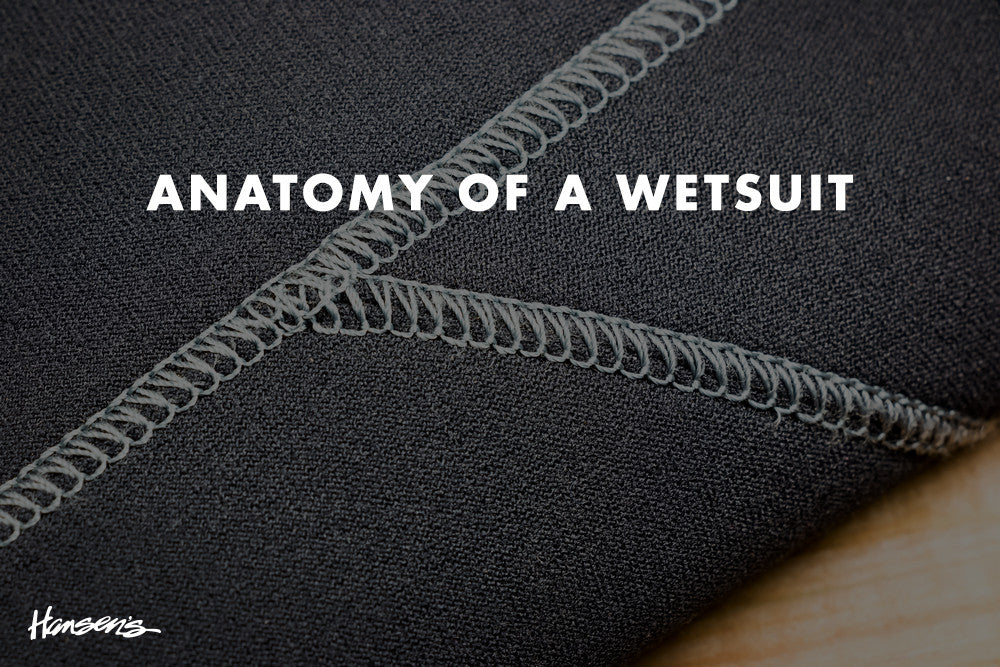Cart Details Should Go Here

There was a time not long ago when the surfers of coastal California would suffer from fall to late spring. Surfing for short durations and shaking uncontrollably, all while trying to dodge hypothermia in the hopes of catching a few sick waves.
In the early 1950’s a man named Jack O’Neill, a waterman with a rugged beard and a wild smile started experimenting with closed cell neoprene while surfing and bodysurfing close to his San Francisco home (Jack would later relocate to Santa Cruz). Shortly after Jack and his namesake brand O’Neill would start providing the world’s surfers with functional wetsuits.
Around this same time Bob Meistrell another NorCal surfer was launching Body Glove and soon the two brands would be the world leaders in emerging wetsuit technology. While wetsuit technology has grown by leaps and bounds and every major surf brand manufacturers their own high tech neoprene now, Jack and Bob are certainly considered the Godfathers of the modern wetsuit.
Today we are blessed to have well functioning and super flexible wetsuits, from springsuits to fullsuits, that allow us to perform in a number of conditions. From Alaska to Chile, surfers are able to surf for long durations with little worry of cold water being dangerous due to water temperature alone. However to truly find the best wetsuit for your specific needs it is important to understand how a wetsuit functions and what kind of wetsuit you may need for your fall, winter and spring surf aspirations.
With that we have broken down the anatomy of modern wetsuits from stitching to thickness, so you can know what fullsuit is best for you, when the swells really start rolling in.

Materials-
Wetsuits are still generally made with closed cell neoprene, making them close relatives of earlier versions, but the neoprene has undergone advancements and each company has it’s own technology that allow for faster drying and more flexible wetsuits. For instance O’Neill has their TechnoButter 2 Neoprene, a super stretchy, super warm and fast drying version of the original.
Liner-
Some wetsuits still have only a thin layer of neoprene between your skin and the water, but most high tech and warmer suits have some type of liner that enhances warmth and comfort. Liner’s continue to evolve, allowing for a warmer feel with thinner neoprene offering maximum comfort and warmth.
Thickness-
One of the most important aspects of what wetsuit will work best for you is the thickness. While the spring, summer and early fall months can often be enjoyed with just a topper or springsuit in Southern California, it is important to have a quality fullsuit if you want to surf year round, even in sunny San Diego. If you are looking for a fullsuit that performs well all year in Southern California a 3/2 (3mm of neoprene in the core and 2mm in the arms and legs) is a great choice as it is thick enough to keep warm in all but the coldest conditions, but is also flexible enough to cater to performance surfing during fall, spring and even cold summer days.
For some, especially those that love scoring early morning barrels and sunset sessions in the coldest days of winter a 4/3 is in order, as water temps can dip down into the 50’s during winter.

Zipper and Entry-
When talking about fullsuits there are two types of zippers, front and rear. Front zip generally requires you to step into the wetsuit through the top of the suit pulling it up and over the torso before pulling a back or side flap over your head and zipping or securing in the front or on the side.
Rear entry and zip fullsuits generally have a zipper down the back allowing the person to step into the legs, requiring the surfer to pull the rest of the suit up around the chest, and zip up the back via a zipper with lanyard attached.
Stitching and Seals-
Fullsuits consist of a back and chest panel, legs and arms, and sometimes hoods. These are all stitched together and a good quality stitch is essential in a high quality wetsuit. Wetsuits eventually breakdown, anytime you have something that is constantly being soaked in saltwater and beat on, it eventually breaks down and with many wetsuits this happens at the seams first. Many companies recognize this and have gone to great lengths to keep seams sealed with both taped and glued seams. When seams are covered and bonded it makes for a warmer fullsuit as less water is allowed in. It will also take longer for the suit to breakdown, making it a better investment.
Now that you understand the anatomy of fullsuits, you can use our comprehensive wetsuit buyers guide or stop into our store to find the perfect fit. Shop Hansen’s to find the perfect fullsuit for this winter’s swells, and we will catch you in the surf!